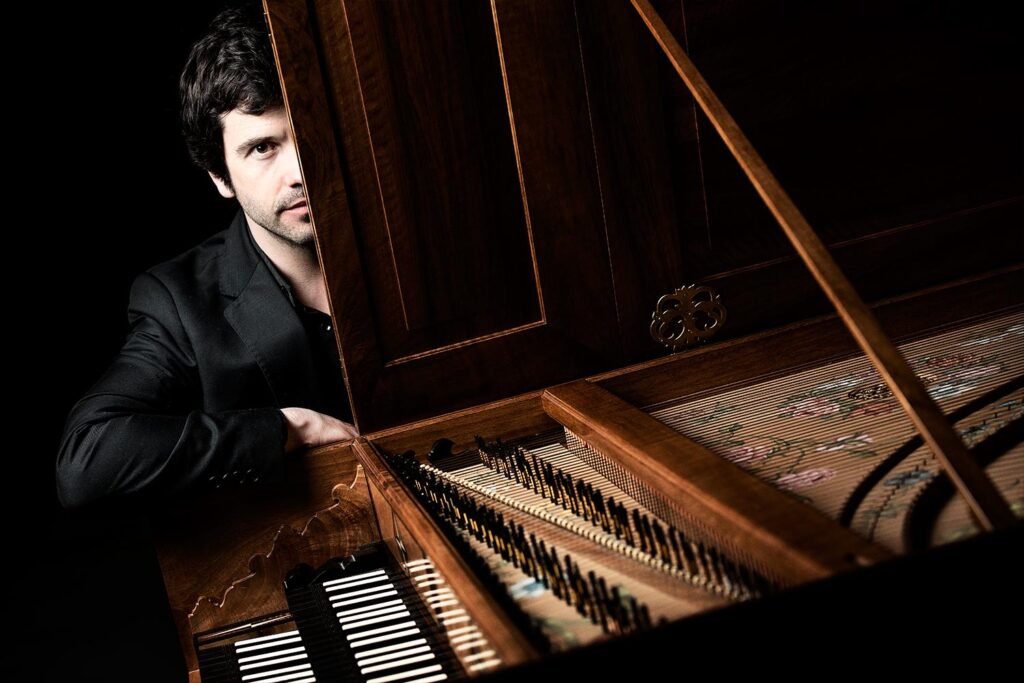The fifth piece in the first part of the Clavier-Übung, the Keyboard Partita No. 5 in G major, opens with a radiant improvisatory movement titled “Praeambulum” – a term more readily associated with the written word than with a musical opening. However, as we know, Bach wanted to give different titles to the initial movements of the six partitas, in part to excite the interest of prospective buyers of his editions. This Praeambulum is the less structured opening movement of the entire set, consisting of a series of improvisations around the recurring motif introduced in the first four bars: shorter and longer descending scales culminating in cadential chords. Another salient ingredient is the material introduced in bar 21: groups of sixteenth notes on one hand against slower moving notes on the other, in alternating fashion.
After this introduction, we get three of the four standard dances of the suite: Allemande, Corrente and Sarabande. The “galanteries” – a Menuet and a Passepied – are inserted at that point, and the usual Gigue closes the work.
The Allemande indulges in the more and more popular “galant” style, with never-ending strings of triple rhythms, technically sextuplets, fitted into in the characteristic “C” time signature of the Allemande. The opposite hand often accompanies these figures with a dotted rhythm, which gets “softened” as it is played alongside the triplets.
The Corrente features all the characteristics of the Italian flavor of this dance: two-part writing, longer pick-up bar and simple (3/8 or 3/4) time signature. The Sarabande brings back three voices, and its use of double appoggiaturas and dotted figurations gives it a complex rhythmic structure.
The first “galanterie”, curiously labeled “Tempo di Minuetta”, shocks with its ambivalent time signature. Technically it’s written in the typical 3/4 of a Menuet, but the music creates a perpetual hemiola which allows the entire piece to be counted in two. The second “galanterie” is a Passepied, a French dance in triple meter, similar to a fast Menuet.
The Partita closes with a substantial Gigue, a double fugue in three voices, each section of the movement using one of the themes, which are both two bars long.
Ignacio Prego plays a French harpsichord by Bruce Kennedy (2021), modeled after those of the Blanchet family. The recording was made in December 2021 in Galapagar (near Madrid), Spain.
